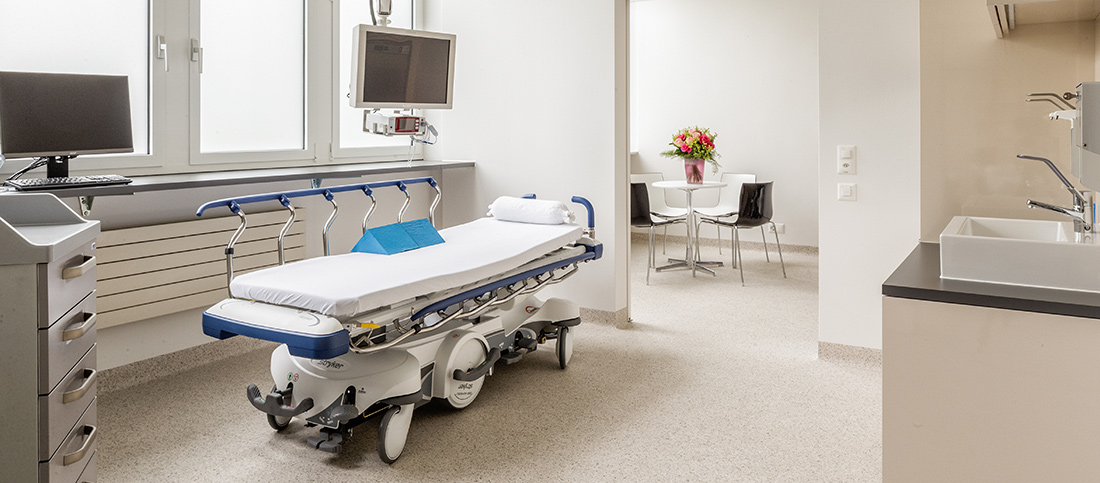Gastroscopy (Upper Panendoscopy)
A gastroscopy (upper panendoscopy) is the examination (endoscopy) of the oesophagus, the stomach, and the duodenum. It is used to diagnose, monitor, and treat disorders of the upper digestive tract such as heartburn, acid reflux, dysphagia, flatulence, stomach pains and other known diseases.
During the examination, and if necessary, tissue samples (biopsies) can be taken with small forceps that are only a few millimetres in size.
What Happens During a Gastroscopy?
The gastroscopy is performed by our physicians with state-of-the-art instruments and processors from the leading manufacturer of endoscopes.
Patients may not eat or drink anything at least 6 hours before the gastroscopy, as the stomach must be empty for the gastroscopy.
Patients are sedated with a short-acting sedative (Propofol, Disoprivan). Their pulse and oxygen saturation are monitored closely. The sedative is administered through a venous cannula in the forearm.
Due to the sedative, and for legal reasons, patients are not permitted to drive vehicles (including bicycles) on the day of the examination. Patients should also refrain from operating heavy machinery and engaging in potentially hazardous activities.
The patient is asked to lie in a comfortable left lateral position and is then given a mouthpiece that protects the delicate instruments and the patient's teeth. Once the patient is sedated, the endoscope is passed carefully through the mouth into the uppermost part of the duodenum. Once the endoscope is inside, air is blown into the patient's stomach. This allows the physician to closely examine the duodenum, the entire stomach, and the oesophagus as the endoscope is withdrawn. If necessary, the physician will take tissue samples (biopsy).
The sedative wears off quickly after the examination. The doctor will then explain the results of the examination to the patient.
The entire procedure (including the preliminary talk, recovery from the sedation, and debriefing) takes about 1.5 hours.

